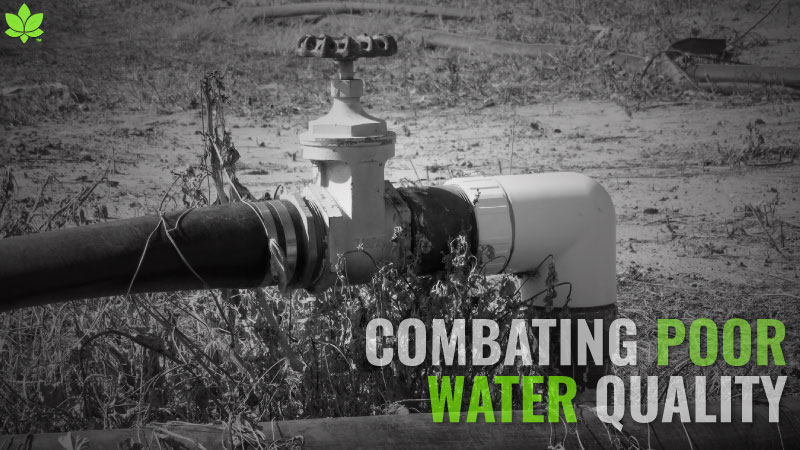Researchers Seeking Agricultural Applications For Unmanned Aircraft
The Citrus Research and Education Center in Lake Alfred, FL, recently hosted a workshop on the future applications of unmanned aerial aircraft (UAVs) in agriculture. The event brought together academics from across the world who specialize in the use of these machines.
Dr. Reza Ehsani, an agricultural and biological engineer with UF/IFAS, coordinated the event to shine a light on how the rapidly advancing uses of UAVs are being explored by many industries including agriculture.
“UAVs will have useful applications for agriculture, but they are not perfect,” he said. “That is why ground support will always be helpful to verify what the images and data being collected by these machines are telling us.”
Regulators Propose Rules
One of the big snags for the use of UAVs in agriculture is that many of these applications are technically illegal. In February, the Federal Aviation Administration (FAA) proposed a framework of regulations that would allow routine use of certain small UAVs and provided some clarity to agriculture. The FAA proposal offers safety rules for small aircraft (under 55 pounds) conducting non-recreational operations.
The rule would limit flights to daylight and visual-line-of-sight operations (within sight of the operator). It caps UAV altitude at 500 feet above ground level.
Operators would be required to pass an initial aeronautical knowledge test (recurring every 24 months) at an FAA-approved knowledge testing center and be vetted by the Transportation Security Administration. Operators must be at least 17 years old.
“It will take at least a year until the proposed rules go through all of the approval process,” Ehsani said. “So, we are probably looking to be able to use UAVs under these regulations sometime in 2017.”
Science Moves Forward
While the regulatory hurdles are being sorted out, researchers continue to seek applications for UAVs in farming. One challenge is taking aerial images captured by UAVs and utilizing that data to create prescription maps of fields or groves for precision applications of inputs like herbicides.
Jose Pena, from Spain’s Institute For Sustainable Agriculture, detailed research he is conducting on field and orchard crops. The study is utilizing quad-rotor UAVs hovering over fields to take imagery of crops and weeds.
“This technology would require a very high resolution image of 1 to 3 centimeters,” he said. “With the normalized difference vegetative index (NDVI), the image of the weeds and the crop (wheat) look very similar. We can help discriminate the crop from weeds by the linear row of wheat. We can build an algorithm to distinguish between the two, but it is a very complex challenge.”
In orchard crops like citrus, telling the difference between weeds and trees is much easier due to the relative size of the plants. The technology also can be used to count trees and determine their sizes.
Pena says the goal is to use the imagery captured by a UAV to build a herbicide prescription map that would direct the spray rig when and where to spray. In one example, he showed where this technique cut the herbicide application by 75% compared to conventional applications.
Yunjun Xu, an associate professor of mechanical aerospace engineering at the University of Central Florida, is working to develop a UAV system that will team up with a ground robot for more robust inspections of plants in fields.
Xu is applying the research to strawberries. A quad-rotor UAV flies over the crop collecting less expensive lower resolution imagery. When it spots a potential problem area, it signals the ground robot to move to the area for a much closer and longer inspection.
The ground robot can carry a much heavier payload, thus it can carry a heavier battery for longer operation and a bigger camera for higher resolution images. While the UAV can operate for about 30 minutes, the ground robot can cover about 10 miles on one battery life.
The robot can be operated autonomously or by remote control. The width and height of the machine can be adjusted to accommodate bed sizes.
♦ Top 10 Ag Uses For UAVs In The Future ♦
What about UAVs that fly themselves? Jnaneshwar Das, a postdoctoral researcher in robotics at the University of Pennsylvania’s GRASP Lab, says the technology is no longer the stuff of science fiction.
While the GRASP Lab has only been involved with agricultural research for just over a year, it already is developing the idea of swarms of hummingbird-sized autonomously flown UAVs that can cover large areas and scan plants more closely.
The units can fly very close to the ground and map the environment on-the-go, which makes autonomous operation possible. Das provided an example of research conducted at Booth Ranch in California where a UAV, flying between rows counted fruits on citrus trees. The unit counted 479,395 fruits or 539 per tree on a 26-row text plot.
The workshop hosted a variety of other presentations on how unmanned aircraft can be deployed in the future to help meet the 2050 challenge of increasing food production by 70% to meet the demands of the growing global population.
Growers Believe
Harald Scherm, a professor of plant pathology and assistant dean of research at the University of Georgia, discussed a Specialty Crop Research Initiative Planning Grant, which seeks grower input on the future applications of UAV technology in farming.
As part of the program, the initiative hosted a grower listening session during the 2015 Southeast Fruit & Vegetable Conference in Savannah. Growers in attendance were surveyed to assess UAV’s usefulness in agriculture.
More than 80% of respondents have given some consideration or seriously considered the use of UAV technology in their crops.
Top 10 Uses
The survey showed what growers believe will be most useful applications in the future.
1. Stress/Disease Detection
2. Water Stress Detection
3. Detailed Plant Scouting
4. Yield/Maturity Estimation
5. Repelling Pest Animals
6. Problem Weed Location
7. Environmental Monitoring
8. Pesticide Application
9. Spreading Light-Weight Materials
10. Worker Surveillance










